Kokuten Kōdō
출생 : 1887-01-29, Takasago, Hyogo Prefecture, Japan
사망 : 1960-01-22
약력
Kokuten Kōdō (高堂 国典 Kōdō Kokuten, 29 January 1887 – 22 January 1960) was a Japanese film actor. He appeared in more than eighty films from 1923 to 1959.

암흑가에 몸담고 살아가던 형제가 어느 한 사건을 계기로 조직에서 발을 뺀다. 하지만 조직은 이들의 목숨을 노리는데… 등 경쾌한 청춘영화를 만들어온 오카모토 기이치감독의 첫 액션 영화. 맛깔나는 연출로 한껏 멋을낸 오카모토 기이치 감독의 세번째 작품. (2011년 한국영상자료원 - 오카모토 기하치 감독전)
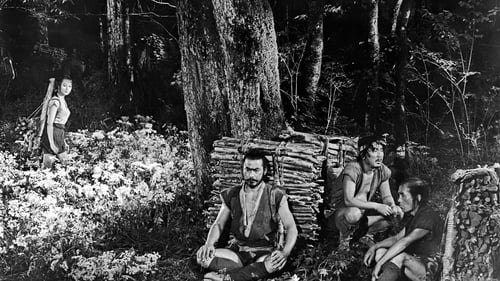
Old man in front of sign (uncredited)
전쟁포로에서 탈출한 두 농부가 고향으로 돌아가던 중 우연히 황금을 발견한다. 그 황금은 비밀 요새에 은신 중인 유키 공주와 마카베 장군이 왕국의 재건을 위해 숨겨둔 것. 이제 유키 공주와 마카베 장군은 두 농부와 함께 황금을 짊어진 채 적진 한가운데를 관통하는 대장정에 나선다.
말을 타고 달리면서 벌어지는 군무, 위기가 끝나는 순간 다시 시작하는 위기, 두 장수가 만나서 벌이는 진검승부, 그리고 유머와 교묘한 극작술, 호쾌한 주인공들과 다양한 등장인물 속에서 구로사와 아키라는 이제는 더 이상 볼 수 없는 통쾌무비한 재미의 진수를 펼쳐보인다. 구로사와 특유의 호쾌한 액션과 유머 감각이 빛나는 작품으로 최고의 엔터테인먼트 영화 감독으로서 구로사와의 탁월한 능력을 확인시켜주는 영화. 조지 루카스의 스타 워즈의 모태가 된 것으로도 특히 유명하다.
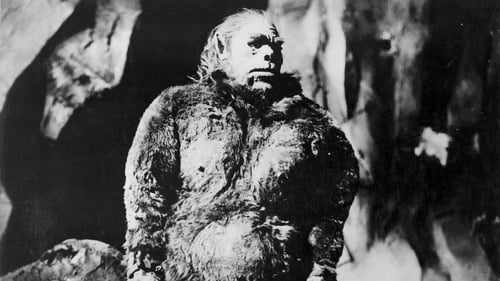
Mountain Tribe Leader
An American scientist tells two colleagues about the finding of an abominable snowman living in the Japanese alps, where it is worshipped by a remote tribe as a god, and how it was discovered by modern man after it raided a ski-ers' shelter following an avalanche, killing all inside. This is an adaptation of the Japanese film Ju Jin Yuki Otoko with added American-made footage, narration and music track.
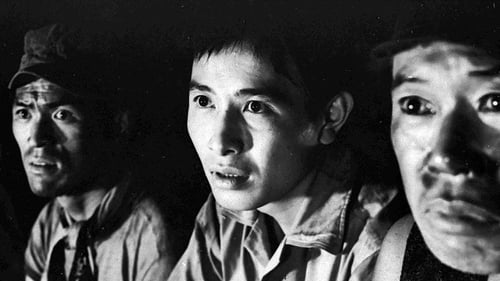
Based on a 1956 television feature on Japan’s national network, NHK, this is one of Uchida’s rarest films. A socially conscious drama with a contemporary backdrop, Dotanba focuses on the attempts to rescue a group of trapped miners. The title is a figure of speech — (essentially “last minute” or “eleventh hour”) — that refers to a situation of peril. The film boasts a script co-written by Uchida and Akira Kurosawa’s frequent screenwriter, Shinobu Hashimoto, and stars Kurosawa’s frequent star Takashi Shimura.
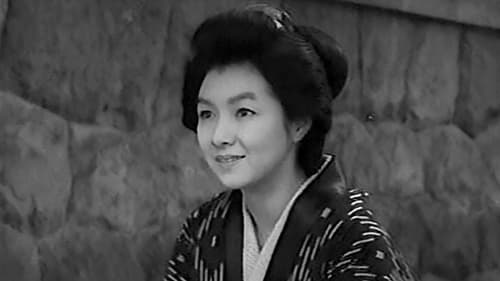
Kinshichi
어릴 때부터 생업전선에 뛰어든 뒤 몇 명의 남자들 사이에서 험난한 시간을 보낸 오시마의 삶을 그린 작품. 19살에 결혼한 오시마는 열심히 일하면서 행복하게 살려 하지만 바람기 많은 남편 때문에 마음 고생을 한다. 여기에 불운한 사고까지 겹치면서 오시마는 이혼을 하고 다른 마을로 팔려간다. 하지만 그녀는 끝까지 좌절하지 않고 계속해서 희망을 찾는다.
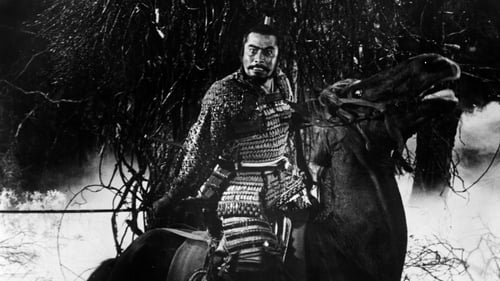
Military Commander
전쟁에서 이기고 성으로 돌아가던 와시즈는 산속에서 길을 잃고 헤매다가 마녀를 만난다. 마녀로부터 새 영주가 될 것이라는 예언을 들은 와시즈는 갈등에 휩싸이다 결국 영주를 죽이고 권력을 차지하는데...

Old Man on Hill on Oto Island (uncredited)
During an assignment, foreign correspondent Steve Martin spends a layover in Tokyo and is caught amid the rampage of an unstoppable prehistoric monster the Japanese call 'Godzilla'. The only hope for both Japan and the world lies on a secret weapon, which may prove more destructive than the monster itself.

The story of Yoshinaka during the tumultuous period of warring related to us in the Heike Monogatari. Close in setting to Kinugasa’s famous Gate of Hell (1953).

This adaptation of a Hideji Hojo novel, about the historical uprising of the Kuroda clan in 1633, is told through the eyes of retainer, Daizen. As his clan’s new leader, Tadayuki, becomes increasingly militant in his opposition to the Tokugawa shogunate, Daizen is forced to reconcile his loyalty to the clan with his loyalty to Tadayuki, who seems dead set on entangling the clan in destructive conflict. The Kuroda Affair’s mise-en-scène is said to have influenced future Toei director Eiichi Kudo. The film also features two of the greatest stars of Japanese period cinema, Chiezo Kataoka and Ryutaro Otomo.
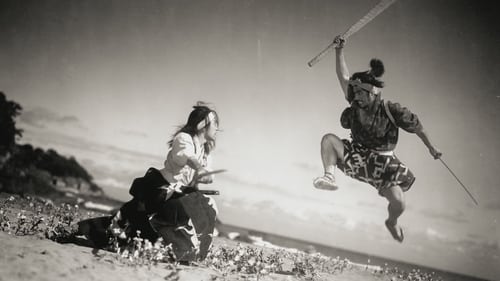
Old Priest Nikkan (uncredited)
일본에서 가장 강력한 지도자 쇼군에게 녹을 받으며 선생으로 일하게 된 다케조. 그는 자신감에 가득찬 사사키 코지로의 도전에 직면한다. 다케조는 1 년 안에 코지로와 싸울 것에 동의하지만 쇼군의 후원을 거부하며 대신 마을 가장자리에서 야채를 키우며 살기로 하는데.

Workers' Older Family Member
주물공장을 경영하는 노인 나카지마 기이치는 원자폭탄과 수소폭탄의 위협을 피하려면 일본을 떠나야 한다며, 전 재산을 던져 브라질로 이민을 준비한다. 브라질 이민을 결코 찬성할 수 없는 가족들은 그를 한정치산자로 선고해 달라고 가정법원에 신청한다. 가정재판소의 조정위원을 맡고 있는 치과의사 하라다는 나카지마 노인의 주장에 마음이 흔들리면서도, 현실적인 선택으로 한정치산자 선고를 인정할 수밖에 없다. 아무것도 할 수 없게 된 나카지마 노인은 핵에 대한 불안과 공포 속에 점차 기력을 잃어가고, 공장을 포기하지 않으려는 자식들을 설득하기 위해 급기야 공장에 불을 지르기에 이른다.
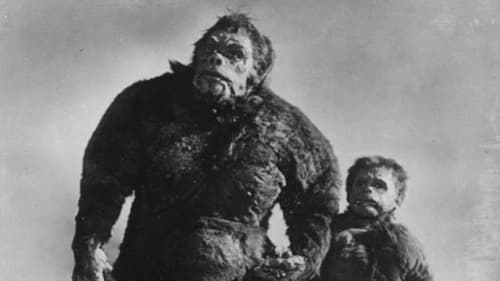
Tribal Chief
Three competing parties all race against time to track down an elusive creature known only as the Snowman.

Following the tragic death of his father, a young boy's family trains his horse to compete in the local derby.

Old Priest Nikkan (uncredited)
다케조는 일본에서 가장 위대한 검술가로 명성을 쌓은 몇 년 후 교토로 돌아온다. 오쓰는 그를 기다렸으나 그녀를 위해 온 것이 아니라 지역 최고 검술가의 장에게 도전하기 위해서이다. ... 다케조는 승리로 교토를 떠나며 오츠에 대한 자신의 사랑을 선언하지만 ... 다시 또 그는 혼자 떠난다.
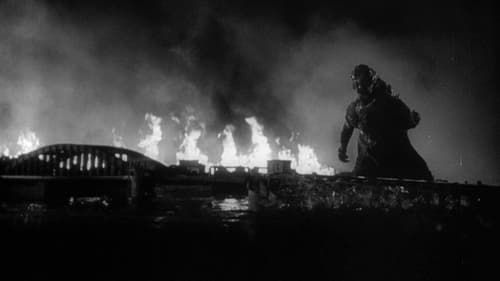
The Old Fisherman (uncredited)
수만년동안 태평양에 잠들어있던 고질라가 핵폭탄 실험으로 인해 깨어나 선박들을 납치한다. 이어 고질라는 도쿄까지 상륙하지만, 핵실험의 영향으로 괴력을 갖게 된 고질라에게는 어떤 최첨단 무기도 통하지 않는다. 도시는 고질라가 내뿜는 방사능와 불길에 휩싸여 초토화되지만, 손쓸 방법이 없어 많은 희생자들이 발생한다. 이 고질라를 쓰러뜨릴 에너지인 오키시젠 디스트로이어를 개발한 과학자 세이자와 다이스케는 그 방법을 알리길 거부하고, 희생자는 점점 늘어만 가는데...
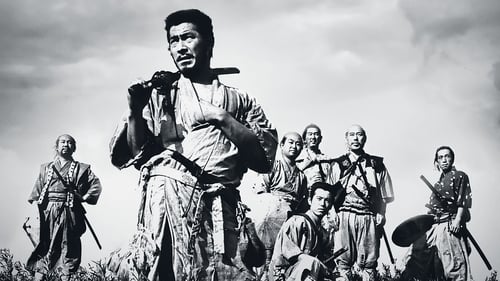
Gisaku, the Old Man
일본의 전국시대. 주민들은 황폐한 땅에서 어렵게 수확한 식량으로 한해 한해를 넘기는 빈촌에 살고 있다. 이 빈촌엔 보리 수확이 끝날 무렵이면 어김없이 산적들이 찾아와 모든 식량을 모조리 약탈해 간다. 싸워도 애원해도 소용이 없었다. 가만히 있을 수만은 없던 촌장의 결단으로 사무라이들을 모집하는데, 이들은 풍부한 전쟁 경험을 가진 시마다 칸베에를 포함한 7명이었다. 시마다의 지휘하에 마을은 방위태세를 갖추고 전투훈련도 시작한다. 이윽고 산적들의 공격이 시작되어 치열한 사투가 벌어진다.

Jusaku Kawanabe
Story about a poor Japanese woman living near an American army base who resorts to prostitution.

A married couple looking for an apartment move in with the husband's co-worker, a widower. The husband becomes jealous of the widower and his wife.

Kira Uenosuke
Jidai-geki by Kiyoshi Saeki

1950s Japanese comedy.
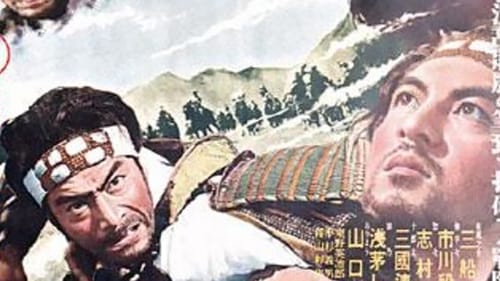
Soldiers Hayate and Yaheiji secretly escape from their besieged castle. Hayate has left behind his lover, Kano. On his way, Hayate is wounded and cared for by O’Ryo, who falls in love with him. But when Hayate accidentally kills her caretaker, he flees, with O’Ryo in pursuit. Subsequently, Hayate's comrade Yaheiji falls in love with Oryo. Kano, the lover left behind by Hayate, believes him dead, and becomes involved with another soldier, Jurota. When Jurota defects to the opposing army, he takes Kano with him. A double set of love triangles has developed, wherein each man and each woman loves one and is loved by another. Finally only combat and self-sacrifice can untangle the weave.
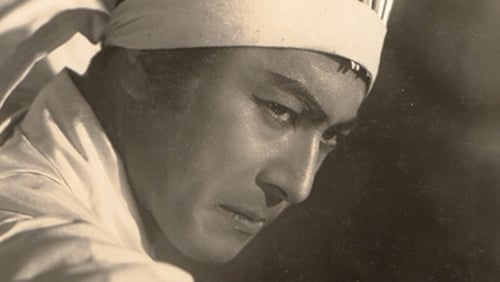
The famous showdown at Kagiya corner has been told many times, but never before with the realism and intensity of this version scripted by Kurosawa Akira and starring Mifune Toshiro as the famed swordsman who must face his best friend as they are forced to take opposite sides in a vendetta caused by the murder of a family member. Told mostly in flashback as the avengers await the arrival of their quarry, this film displays true heroism in the face of fear as most of the combatants, while of the samurai class are not skilled swordsmen. They contrast sharply with the true warriors involved in this battle. Araki Mataemon (Mifune), who was not only a direct student of Yagyu Munenori, but the founder of his own sword style under the Yagyu name is a powerful force ready to assist his brother-in-law against the murderer's allies that include not only another noted sword teacher, but the deadly spear of Katsumi no Hanbei.
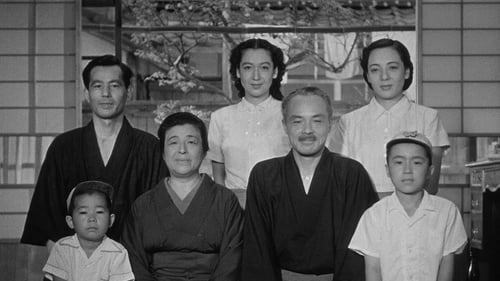
혼기에 찬 노리코는 조건이 좋은 혼처를 거부하고 부모 형제와 상의 없이 오빠의 친구이자 아이 딸린 홀아비 켄이치와 결혼하겠다고 선언한다. 갑작스런 노리코의 태도에 가족들은 당황한다.
오즈 야스지로의 대다수 영화들이 산업화와 서구화에 따른 가정의 해체에 관한 것이듯 이 작품도 딸의 결혼으로 대가족이 해체된다는 기본 골격을 따라 몇 개의 에피소드로 연결 된 홈 드라마이다. “스토리 자체보다 더욱 깊은 의미를 지닌 ‘윤회’라든가 ‘무상’이라든가 하는 것을 묘사하고 싶었다”는 오즈의 언급처럼 이 작품에서 스토리나 플롯이 중요한 기능을 하지 않음은 명백하게 드러난다. 일상적인 삶에 대한 세심한 탐구, 이야기의 과감한 생략, 시공간의 독특한 사용, 계속해서 변하는 행동의 리듬을 통해 오즈 특유의 소시민적 관점이 투영된 작품이다.

(uncredited)
Though recognized worldwide almost exclusively for his colorful kaiju fare, director Ishirō Honda (Godzilla, Rodan, Mothra) was a natural humanist with a particular understanding of the relationship between people and their social environs. His debut fiction feature, The Blue Pearl (Aoi Shinju) – virtually unseen in the west until now – depicts the melodramatic, but keenly-observed interplay between a young man from Tokyo and two ama (pearl divers; literally “women of the sea”) in a superstitious coastal town. Though raised within the same tradition-bound crucible, the two women – Noe and Riu – are portrayed as diametric opposites; the former meek but affectionate, the latter strong-willed but jaded by a tryst with metropolitan life. Nonetheless, Honda provides equal weight to their desires and their ambitions to break free from the social mold imposed upon them from birth.
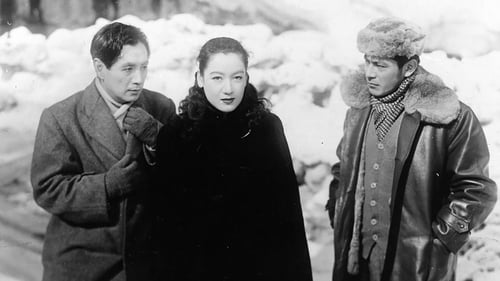
Junpei
가메다는 전범으로 총살 직전에 구출 된 쇼크로 전간성 백치가 되었다. 막대한 유산을 상속하기 위해서 삿포로로 향하는 아카마는 너무나 적의 없고 순수한 가메다에게 매력을 느껴 친해진다. 아카마는 정치가인 도바타에게 둘러싸여 있던 아름다운 여자, 다에코를 사랑하고 있다. 도바타는 지참금과 함께 다에코랑 결혼할 남자를 찾고 있다. 지참금을 원해서 다에코랑 결혼을 하려 하는 가야마는 사실 아야코를 사랑하고 있고 아야코는 가메다의 아름다운 마음에 반한다. 가메다는 다에코의 얼굴에서 총살 당한 전우의 옛모습을 보고 눈물을 흘린다. 아카마가 거액의 지참금을 가진 다에코를 빼앗으러 나타나자 다에코는 돈을 난로에 던져 버리고 가메다의 행복을 빌며 아카마와 함께 떠난다. 가메다는 다에코를 따라간다. 질투를 한 아카마는 밤중에 길에서 가메다를 몰아 부쳐 간질 발작을 일으키게 한다. 아카마에게 불려간 가메다는 다에코의 사살 사체를 목격한다. 아카마의 정신도 이상해져 두 사람은 같이 정신 병원에서 일생을 보내게 된다.

The Ueki family may not be wealthy, but smiles are never in short supply. The father is awarded prize money for 25 years of service to his workplace, but has it stolen on the way home from the ceremony...
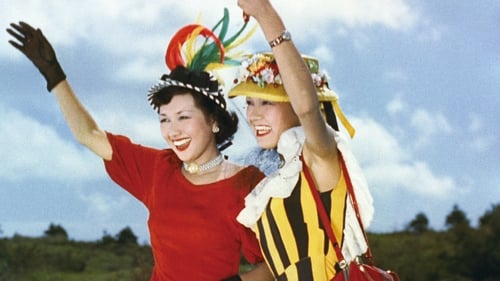
소와 말들이 뛰노는 평화롭고 한적한 산골 마을. 어릴 적 가출을 한 뒤 도쿄에서 스트립퍼로 일하고 있는 카르멘이란 예명의 오킨이 자칭 금의환향을 하겠다는 편지를 보내왔다. 오킨은 자신의 직업을 '정말로' 예술이라고 믿고 있는, 머리가 약간 모자라는 여자다. 오킨의 언니는 그 편지를 들고 가서 아버지께 보이며 오킨의 금의환향(?)을 허락해 줄 것을 부탁하지만 아버지의 반응은 냉담하다. 결국 남편과 상의를 한 끝에, '일본은 문화국가'임을, 그래서 응당 예술가는 어떤 일이 있어도 대우해 주어야 한다고 굳게 믿고 있는 교장 선생에게 아버지를 설득시켜 줄 것을 부탁한다. 우여곡절 끝에 귀향을 허락 받은 오킨. 산골 마을에서는 꿈도 꾸지 못할 파격적인 모습으로 금의환향을 하게 되고, 그런 오킨과 그 동료 마야의 모습은 순박한 산골 마을 사람에게 일대 파문을 일으키며 갖가지 해프닝이 벌이지게 된다. 한편, 돈이 되는 일이라면 물불을 가리지 않는 탐욕스러운 사업가인 마르쥬는 마을 사람들을 상대로 한 오킨의 스트립쇼를 계획하게 되는데...

Shige'emon Otobe
Jidai-geki by Nobuo Nakagawa. Most likely a star vehicle for Kanjuro Arashi

A romantic melodrama about the shifting relationship between Ryosuke and Miki as their precarious employment and social circumstances shift around them.
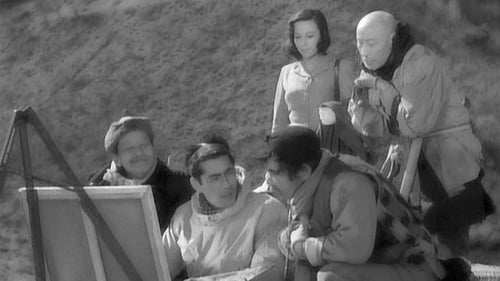
Old Man #1
신진 화가와 인기가수의 만남이 잡지 카메라맨에게 들통난다 - 스캔들 잡기에 혈안이 된 매스컴 비판 영화

Kuga
An attempt is made to suppress a journalist's investigation of collusion between a rural police chief and the local gangster bosses.
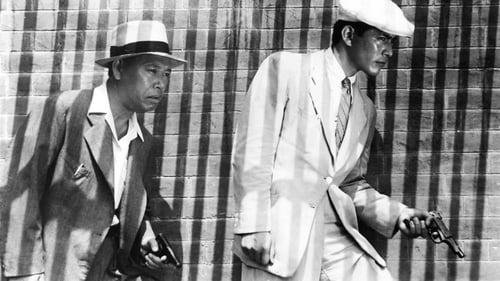
Old Landlord
무더운 여름날, 만원 버스에 오른 초보형사 무라카미(미후네 도시로)는 소매치기에게 권총을 도둑맞는다. 고참 형사 사토(시무라 다카시)의 조언에 따라 사라진 권총의 단서를 추적하는 무라카미. 버스에서 그에게 달라 붙어 있던 중년 여인은 알고 보니 일급 소매치기였다. 무라카미가 그녀를 미행하는 동안 도심 한 복판에서는 총기 강도사건이 일어난다.
거장 구로사와 감독의 초기 수작으로 일본 전후 사회의 매우 리얼한 풍경 묘사는 물론 범죄 수사과정을 하나부터 열까지 꼼꼼하게 좇아가는 치밀함을 느낄 수 있는 정통 형사물이다. 각본가 기쿠시마 류조가 경시청 취재 중 듣게 된 경관 권총 분실 사건을 소재로 만든 영화. 끈적하게 땀이 배일 것 같은 후덥지근한 여름의 분위기와 종전 후 서서히 부흥되어 가고 있는 도쿄의 실상이 매우 리얼하게 담겨 있다. ‘메그레 경감’ 시리즈로 유명한 추리소설가 조르주 시므농의 팬이기도 했던 구로사와는 긴박감 넘치는 추리영화의 틀을 빌려, 전후의 피폐한 현실과 가치관의 혼란을 탁월하게 묘사해 냈다. 모리사키 아즈마에 의해 1973년 리메이크되었으며, 아오야마 신지의 (1997) 역시 직접적인 영향을 받았다. , , 등 많은 미국영화에서 이 작품에 오마주를 바친 장면들을 발견할 수 있으며, 특히 조지 루카스의 에서 오비완 케노비가 라이트 세이버를 떨어뜨린 아나킨을 힐책하는 장면은 사토가 무라카미를 질책하는 장면을 그대로 인용한 것이다.
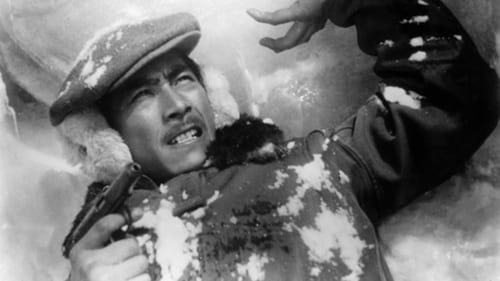
Haruko's Grandfather
Three bank robbers, Eijima, Nojiri, and Takasugi, flee the police and escape into the mountains. At an inn high in the Japanese Alps, Eijima and Nojiri encounter a young woman and her father, as well as Honda, a mountaineer. The inn folk do not realize their guests are wanted criminals and the visitors are treated with great kindness. Honda volunteers to lead them over the mountains, but Eijima's paranoia endangers all of them as they make the perilous trip.
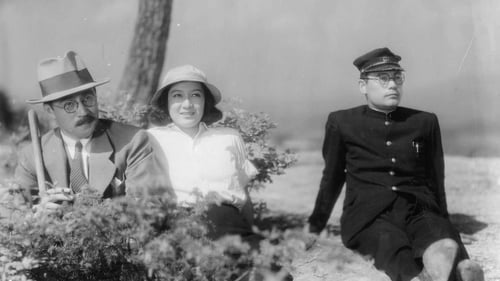
Mr. Noge
쇼와 8년(1933년), 교토대학 학생 유키에는 법학부 야기하라 교수의 딸로 부족함 없는 생활을 누리고 있다. 아버지의 제자 중 신중하고 상식을 중시하는 이토카와와 정의를 위해 투쟁하고자 하는 노게. 유키에는 대조적인 두 사람 사이에서 흔들린다. 그러던 중 자유사상을 이유로 야기하라 교수가 탄압을 받게 되고, 노게는 좌익 운동을 하다 수감된다. 수년 후 검사가 된 이토카와의 청혼을 거절하고, 유키에는 노게를 찾아가 동거를 시작한다. 노게는 반전 운동을 하다 스파이 혐의로 체포되고, 감옥에서 고문을 당해 죽고 만다. 유키에는 노게의 유골을 안고 그의 고향으로 향한다.

Buddhist Priest Saiduchi
전작에서 5년의 시간이 흐른 메이지 20년(1887년). 히가키 겐노스케와 대결한 후 더 큰 깨달음을 얻기 위해 여행을 떠났던 스가타 산시로는 어린 인력거꾼을 괴롭히는 미국 선원을 유도로 제압한다. 그 모습을 지켜보던 미대사관 직원이 산시로에게 접근해 대사관에서 열리는 권투 대 유도 시합에 출전해 보라고 권한다. 돈이 오가는 오락일 뿐인 야만적인 시합 모습에 질린 산시로는 권유를 단칼에 거절하고 도장으로 돌아온다. 곧이어 겐노스케의 동생들인 뎃신과 겐자부로가 산시로를 타도하고자 찾아오는데, 고민하던 산시로는 도장의 규율을 어기고 대결에 임하기로 한다.
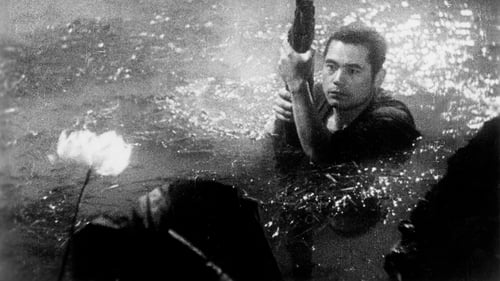
Buddhist Priest
The story of Sanshiro, a strong stubborn youth, who travels into the city in order to learn Jujutsu. However, upon his arrival he discovers a new form of self-defence: Judo. The main character is based on Shiro Saigo, a legendary judoka.

Hiromasa Nomura World War II era film

Set in Qingdao, China, a Japanese company locates an office there and begins work and cooperation with a local Chinese company for business. Many Japanese engineers also move to China, with their families, for the company in order to construct a canal. There are young Chinese resisting the Japanese in this area.

A 1942 Jidaigeki by the veteran jidaigeki filmmaker Kunio Watanabe about the legendary warrior Musashibo Benkei
with Hideko Takamine portraying Minamoto no Yoshitsune (who is, of course, a man).
The film climaxes in the famous encounter/fight btw Benkei and Yoshitsune at the Gojo Bridge.

Hiryûji Murakami
This epic depicts the battle between Uesugi Kenshin and Takeda Shingen. The focus of the story is the struggle by the unit leader in charge of the main supply wagons and the supply troops to transport materiel to the Uesugi army. To this are added episodes involving an itinerant woman.

Jurobei, a kaisen tonya (wholesaler in port) in Awa, was wronged and killed on the day of the Dance Festival by the evil merchant & the chamberlin. His brother (Kazuo Hasegawa) vowed vengeance on the day of his brother's death. So every year the villains are worried during the Awa Dance Festival (which is part of the Obon festival), but nothing has ever happened, until seven years later...

The story is based on the serial novel by Tsunoda Kikuo.

The story is based on the serial novel by Tsunoda Kikuo.

A Japanese army engineer (Hasegawa) on the mainland must put his personal feelings for a beautiful Chinese woman (Ri) aside if he is to succeed at building a highway through the "bandit"- (aka anti-Japanese militia-) infested hinterlands.


Song of the White Orchid was a co-production of Toho and Mantetsu, the railway that served the colonial region of Manchuria, and the first film in the Kazuo Hasegawa/Shirley Yamaguchi (Ri Koran) “Continental Trilogy.” Handsome Hasegawa (representing Japan) runs up against an impertinent Yamaguchi (representing the continent); not surprisingly, in the course of the film the woman comes around and realizes the benevolent intentions of the Japanese. In Song of the White Orchid Yamaguchi leaves Hasegawa, who plays an expatriate working for the railway, because of a misunderstanding. She joins a communist guerilla group plotting to blow up the Manchurian railway. Learning of the subterfuge that led to the misunderstanding, she renews her faith in Hasegawa—and by extension Japan—and tries to undermine the plot.
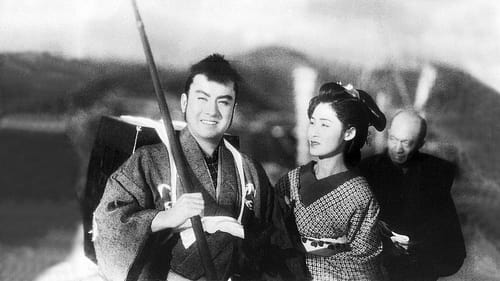
The film tells about the life of the former vassal of the Ako clan - Fuwa Katsuemon Masatane.

Zusho Shozaemon
Japanese film.

dir: Teinosuke Kinugasa

Dobu
An onnagata (female impersonator) of a Kabuki troupe avenges his parents' deaths. Remade in 1963 as Yukinojô Henge.


Uesugi Family Elder
This 1932 adaptation is the earliest sound version of the ever-popular and much-filmed Chushingura story of the loyal 47 retainers who avenged their feudal lord after he was obliged to commit hara-kiri due to the machinations of a villainous courtier. As the first sound version of the classic narrative, the film was something of an event, and employed a stellar cast, who give a roster of memorable performances. Director Teinosuke Kinugasa was primarily a specialist in jidai-geki (period films), such as the internationally celebrated Gate of Hell (Jigokumon, 1953), and although he is now most famous as the maker of the avant-garde silent films A Page of Madness (Kurutta ichipeji, 1926) and Crossroads (Jujiro, 1928), Chushingura is in fact more typical of his output than those experimental works. The film ranked third in that year’s Kinema Junpo critics’ poll, and Joseph Anderson and Donald Richie noted that 'not only the sound but the quick cutting was admired by many critics.

A rare film which depicts the tragic fate of a Christian lord who fought for his fate in the Edo period. Of note is Utaemon Ichikawa's extraordinary memorable final scenes in which he takes on his enemy with a gash in his forehead and a wild, unkempt mane.

Rokubei
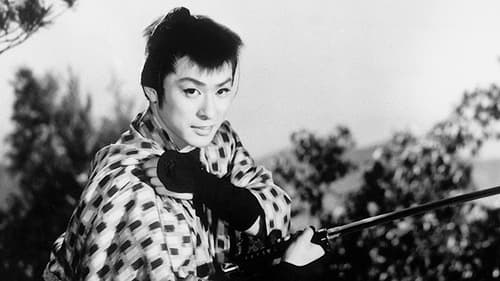
Hanjiro of Kusama searches for his little sister Oyuki, who went missing after being desecrated by Hikosaku Tokurai three years ago. The first film in a series about the adventures of the wandering yakuza Hanjiro from Kusama.








































